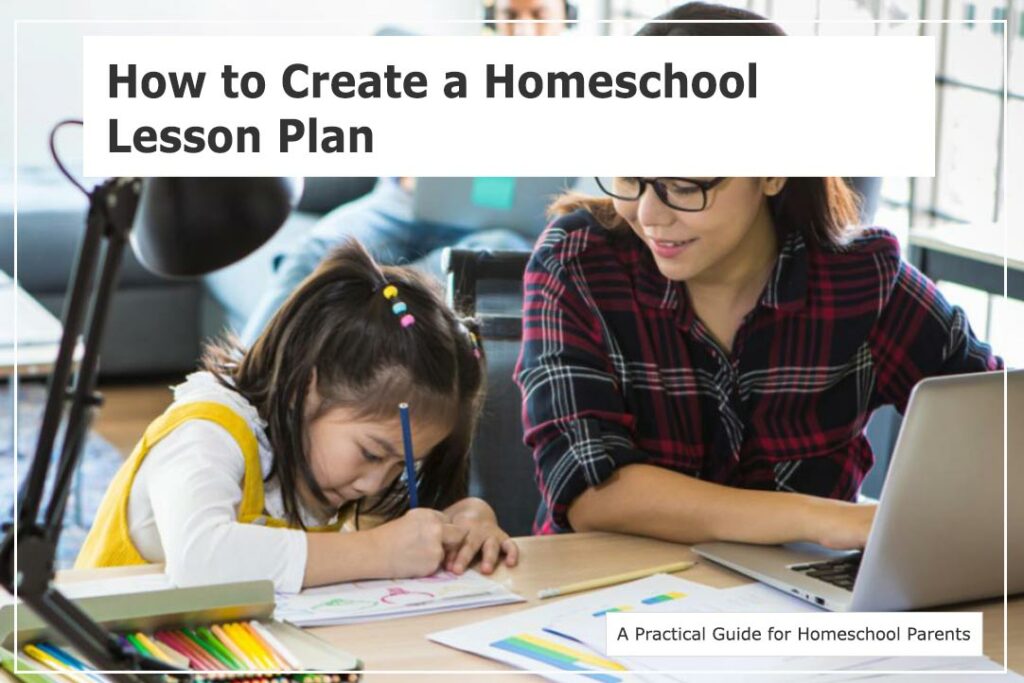How to Create a Lesson Plan for Homeschooling Success
A Practical Guide for Homeschool parents
Having a well-thought-out lesson plan is a game-changer for homeschool parents. It saves time, ensures smooth lessons, and keeps both the teacher and students on track. When you’re just starting your homeschooling journey, organizing your thoughts and planning each lesson ahead of time helps you cover essential topics without unnecessary stress.
Here’s how to create a comprehensive lesson plan for homeschooling that will set you and your child up for success:
1. Understand the Standards
The first step is to familiarize yourself with the educational standards relevant to your child’s grade level. These standards outline what your homeschool student should know by the end of the year. While homeschooling laws and requirements vary by state or region, understanding these benchmarks allows you to:
- Scale lessons appropriately for your child’s skill level.
- Ensure your child meets or exceeds academic expectations.
- Align your homeschool curriculum with any necessary assessments or evaluations.
For example, if your state requires third graders to learn multiplication, your plan should include lessons to achieve that goal by year’s end.
2. Define Lesson Objectives
Once you know the standards, break them into specific objectives for each lesson. Objectives provide clear, measurable goals for what you want your child to accomplish.
For example:
- Standard: "Students should be able to identify, name, and write the alphabet."
- Objective for Lesson 1: Teach your child to recognize, write, and pronounce the letter A.
Breaking the standard into smaller, manageable objectives allows you to focus on steady progress without overwhelming your child.
3. Gather Materials
Having all your materials ready before the lesson begins ensures a smooth and engaging experience for your homeschooler.
For instance, if you’re teaching the alphabet, you might need:
- Paper and pencils for writing practice.
- Flashcards with letters for visual aids.
- A pre-recorded alphabet song for an interactive musical element.
- A smartphone or speaker for playing audio resources.
Preparing materials ahead of time saves you from scrambling mid-lesson and keeps your child focused.
4. Identify Resources
Resources are the tools you’ll use to support your lesson. These might include:
- Books or workbooks that complement your lesson plan.
- Online resources or educational websites for interactive learning.
- Apps or games designed to reinforce the topic.
For example:
For an alphabet lesson, you can research online for ways to help your child explore letters through hands-on games and easy-to-prepare activities. Having these resources ready allows your homeschooler to dive straight into learning.
5. Plan Activities
Hands-on activities make homeschooling lessons more engaging and memorable. Incorporate interactive elements into your lesson plan to keep your child curious and excited about learning.
For example, you might prepare an activity for an Alphabet Lesson: Create a letter scavenger hunt where your child searches the house for items that start with the letter A.
Be sure to include:
- A list of materials needed for the activity.
- Step-by-step instructions to guide the process.
- Well-organized activities make learning fun and help your homeschooler retain information better.
6. Assign Meaningful Work
Assignments help you assess your homeschooler’s understanding of the lesson. When planning, think about how you’ll gauge their progress.
Examples of assignments:
- Worksheets: Have your child trace and write the letter A.
- Recitation: Ask them to pronounce words that begin with A.
- Creative Work: Have them draw pictures of items starting with A, such as an apple or airplane.
Assignments give you valuable feedback and show your homeschooler how their hard work pays off.
Why Lesson Planning is Essential for Homeschooling
A detailed lesson plan helps you:
- Stay organized and maximize teaching time.
- Ensure consistency in your homeschool curriculum.
- Create a more engaging learning experience for your child.
By focusing on objectives, materials, resources, activities, and assignments, you’ll have a clear roadmap for each lesson. This structure allows you to adapt and adjust based on your child’s needs while maintaining steady progress toward educational goals.
Homeschooling doesn’t have to be overwhelming. With a clear lesson plan, you can provide your child with an enriching education that’s tailored to their unique needs and interests. Start small, plan intentionally, and watch your homeschooler thrive!
Just Enter Your Email To Receive
5 Free Hands-On Science Lessons!

Just enter your email and you’ll get instant access to this complete mini-science curriculum.
This free sample program includes:
See how easy it can be for you to go from “Frustrated” about not having enough time or resources for Science… To “Fascinated” by how your kids learn science better than EVER before because now they’re enjoying it!



